Cleopatra (1934)
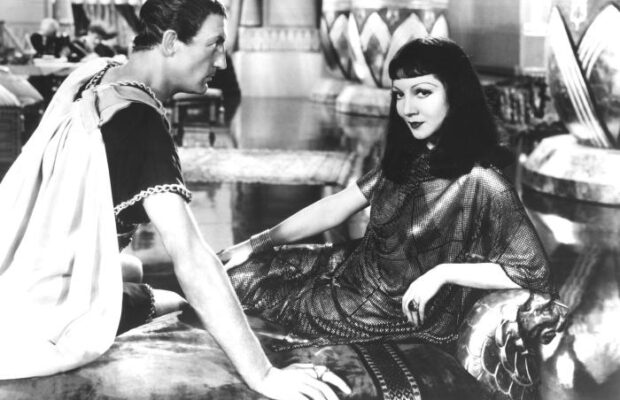
Toronto Film Society presented Cleopatra (1938) on Monday, July 16, 1984 in a double bill with Caesar and Cleopatra as part of the Season 37 Summer Series, Programme 2.
Production Company: Paramount. Producer: Cecil B. DeMille. Director: Cecil B. DeMille. Screenplay: Waldemar Young and Vincent Lawrence from an adaptation by Bartlett Cormack. Music: Rudolph Kopp. Camera: Victor Milner. Editor: Anne Bauchens. Assistant Directors: David McDonald and Cullen Tate.
Cast: Claudette Colbert (Queen Cleopatra), Henry Wilcoxon (Marc Antony), Gertrude Michael (Empress Calpurnia), Warren William (Julius Caesar), Joseph Schildkraut (King Herod), Ian Keith (Octavian), Sir C. Aubrey Smith (Enobarbus), Ian Maclaren (Cassius), Arthur Hohl (Brutus), Leonard Mudie (Pothinos), Irving Pichel (Apollodorus), Claudia Dell (Octavia), Eleanor Phelps (Charmian), John Rutherford (Drussus), Grace Durkin (Iras), Robert Warwick (Archillas), Edwin Maxwell (Casca), Charles Morris (Cicero), Harry Beresford (Soothsayer), Olga Celestse (Slavegirl), Ecki (Leopard), Ferdinand Gottschalk (Glabrio), William Farnum (Senator), Florence Roberts (Flora), Kenneth Gibson, Wedgwood Nowell (Scribes), John Carradine, Jane Regan, Celia Rylan, Robert Manning (Romans), Lionel Belmore (Party guest), Dick Alexander (Egyptian messenger), Jack Mulhall, Wilfred Lucas (Romans greeting Antony), Hal Price (Onlooker at procession), Edgar Dearing (Murderer).
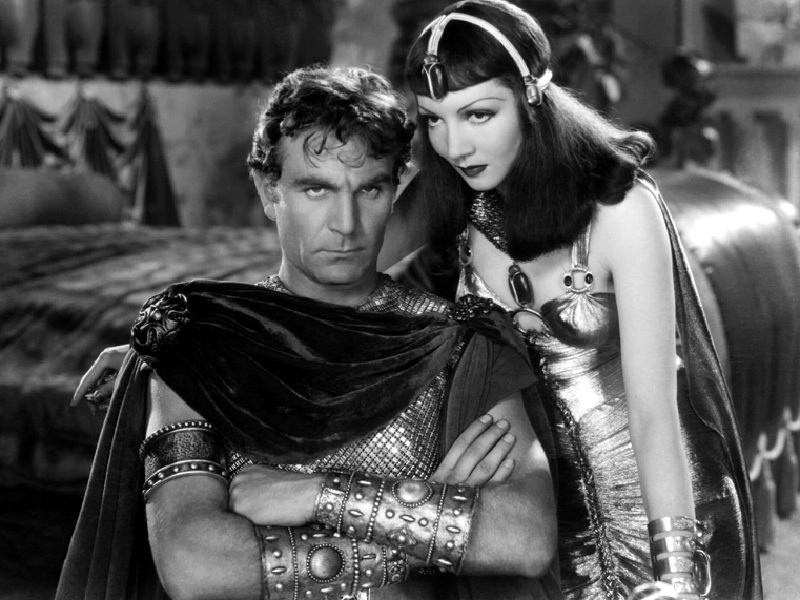
A magnificent spectacle, as only “the man who invented Hollywood” could do ’em, of the life of the Queen of the Nile from her meeting with Julius Caesar to her death with Marc Antony.
In New York Cecil B. DeMille joined up with a vaudeville musician, Jesse L. Lasky, and a glove salesman, Samuel Goldfish (late Goldwyn), to form the movie company which eventually became Paramount, of which he remained the driving creative force throughout his life. For their first production, The Squaw Man, in 1914, they travelled to a western location known as the driest spot in the U.S., only to find incessant rain. Desperate, they decided to go all the way to the Coast, where they had heard of a little orange-grove community called Hollywood that was supposed to have reliable sun. The rest is history. Although he excelled at many genres, the public loved “C.B.” best for his spectacles, and Cleopatra is vintage DeMille, with its unalloyed splendour of sets, costumes, and armies of extras. And the public did love him. In his time he shared only with Alfred Hitchcock the distinction of being a director whose name would bring people flocking to the box office, rather than the stars’ names. The enormous success of his spectacles repaid many times over their huge budgets. “DeMille was a master storyteller who sunned camera trickery and audience manipulation. . . . His films were often described as simple-minded and vulgar, but in sheer narrative skill and judicial [sic] pacing of action, DeMille had few competitors in Hollywood or elsewhere.” (Ephraim Katz, The Film Encyclopedia). In his article on motion picture direction for the 14th edition of the Encyclopaedia Britannica, 1938, DeMille wrote: “The very nature of the director’s position makes him a co-author of the work. . . . In the last analysis the director is a story-teller. .clearness and the art of his telling depends the value of the work.” So much for the auteur theory being of modern origin.
The story of Cleopatra (69-30 B.C.) has been filmed scores of times all over the world from 1899 on, and has usually been the occasion to trot out the reigning beauty of the time. Claudette Colbert can stand comparison with any of them. Born Lily Chaunchoin in Paris, September 13, 19095, her ability to typify the modern American woman in most of her screen roles is explained by the fact that she grew up in New York from public school age on. Her beauty seemed immune to time for more than years of her screen career, and this is partly explained by the fact that she never considered herself particularly beautiful, and consequently spent much time on the care of her face and body. Like many of the superstars, she had a wonderful, distinctive voice, and some idea of the range of her acting ability can be gleaned from the fact that Cleopatra lay between two successive Academy-Award-winning performances of hers, It Happened One Night (1934), a comedy, and Private Worlds (1935), a heavy drama. She was an intelligent, shrewd woman who guided her own career expertly, and had just signed a new two-year contract with Paramount in 1934 at $5,000 a week. It was an earlier DeMille spectacle, The Sign of the Cross (1932) that had moved her into true star status after appearing in many “nice girl” roles from 1927.
Although written by Hollywood scenarists, the script was the weakest element of Cleopatra. James Robert Parrish in The Paramount Pretties comments: “the trite colloquial dialogue often turned the drama into unwitting comedy. Claudette Colbert rose above the script to rivet viewers’ attention as the devastating, long-haired temptress. Her pervading sense of joie de vivre carried the picture.”
The remainder of the cast is loaded with Hollywood notables, but space permits me to mention only that William Farnum was a great star of silent movies (The Spoilers, etc.), and that Irving Pichel later became a fine director, perhaps best remembered for Destination Moon (1950).
Notes by Ron R. Anger

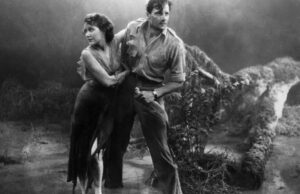
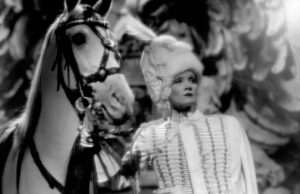
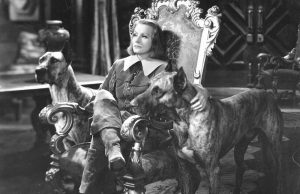






Leave a Reply